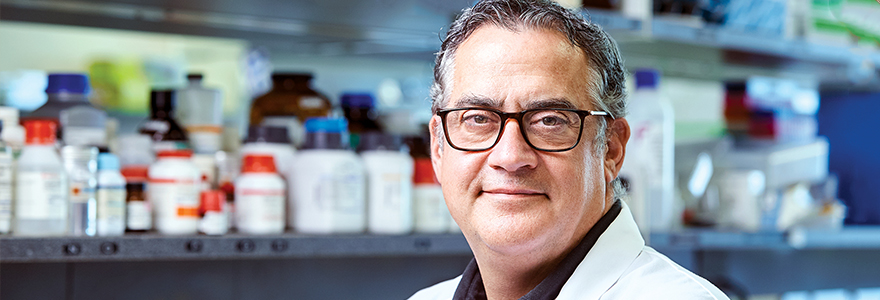Making strides toward a cure for diabetes

David Hess, PhD, has channelled a personal childhood experience into a lifetime of research focused on a stem-cell therapy that would completely eliminate the need for diabetes patients to monitor their glucose levels and take daily insulin shots
By Eliana Chow
As a teenager, David Hess, PhD’99, was diagnosed with a severe form of anemia and underwent a hematopoietic stem-cell transplant to help his body produce more red blood cells. He spent his entire Grade 11 year in isolation so his immune system could recover from the transplant.
That experience turned out to be the catalyst for a meaningful career in stem-cell research, with a particular focus on understanding and treating diabetes. Right before Hess entered his second post-doctoral fellowship, he published a groundbreaking paper on using cells derived from bone marrow to trigger the regeneration of islets, (clusters in the pancreas that contain beta cells responsible for producing insulin). It was his first high-impact paper, and the positive reception he received paved the way for him to continue building on his findings.
“My primary goal is to find ways to help the body heal itself naturally rather than relying on temporary external treatments.”
—David Hess, PhD’99
Now, as an Associate Professor in Physiology and Pharmacology at Schulich Medicine & Dentistry and a scientist at Robarts Research Institute, Hess has had his sights set on discovering a stem-cell therapy that would completely eliminate the need for diabetes patients to monitor their glucose levels and take daily insulin shots.
“My primary goal is to find ways to help the body heal itself naturally rather than relying on temporary external treatments,” he explained.
Through their research, Hess and his team have altered the way many scientists conceptualized how stem cells contribute to recovery.
“We discovered that what stem cells secrete is more important than what they become,” he said. “The proteins they generate are what stimulate the regenerative process.”
Currently, Hess is working to determine which proteins are essential to regeneration, as well as which stem-cell types are most efficient for creating those proteins.
Navigating autoimmunity, the body’s natural defence against foreign cells, remains the most significant barrier to successfully integrating stem cells into a new host environment.
“We’re working hard to find a way to dampen autoimmunity so the body doesn’t attack healthy, regenerated cells,” said Hess. “It’s a delicate balancing act.”
Collaboration is the key to success in his research endeavours, Hess recognizes, so he works closely with expert immunologists to design potential solutions for controlling autoimmunity. But keeping the immune system away from regenerated cells is only half the puzzle. Researchers still have to find ways to keep the cells alive, as cells don’t survive very long when placed in an ischemic, or oxygen-deficient, environment.
Tapping into Western University’s wealth of faculty expertise, Hess has also enlisted the help of Lauren Flynn, PhD, who specializes in bioengineering, to drive his research forward. Flynn generates decellularized adipose tissue, or tissue that has had all its cells removed, leaving only the structural cells in place.
“My team uses that material as a scaffold in which to grow and sustain new cells, which has allowed us to make substantial progress,” said Hess.
He also teamed up with the University of Toronto, where clinical trials for finetuning new diabetes medications are currently taking place. “We’re examining how these new medications can impact the circulating level of pre-existing stem cells in the blood,” Hess explained.
“There is significant potential to leverage a patient’s own stem cells to help prevent cardiovascular comorbidities, especially in patients with Type 2 diabetes.”
Although it could be many years before Hess’s research reaches a stage where it translates directly into therapeutic treatments, the impact of his efforts extends far beyond his own department. Recently, Western provided funds for Hess to head an interdisciplinary development initiative dedicated to cross-generational education surrounding stem cells in regenerative medicine. The team consists of 20 investigators from a wide range of disciplines who collaborate to create educational programs, fund young researcher grants, and educate students about how stem cells can be used to treat cardiovascular diseases and diabetes.
“With multiple faculties from Western involved, the program has cultivated synergy between scientists who wouldn’t normally have the opportunity to work together,” he reflected.
Hess expresses gratitude for the unwavering support of his colleagues at the School and Robarts throughout his tenure.
“My research is extremely specialized, and I’m fortunate to have had access to everything I need, from a technological and financial perspective, from the very beginning,” he said. “It’s an honour to learn from and contribute to stem-cell research that’s internationally renowned and making huge strides to improve the well-being of diabetic patients.”








